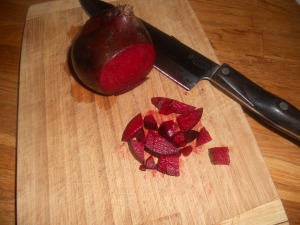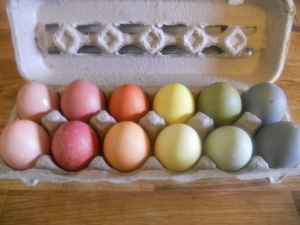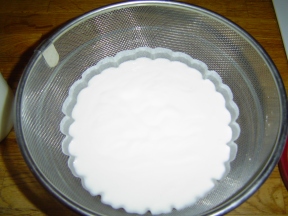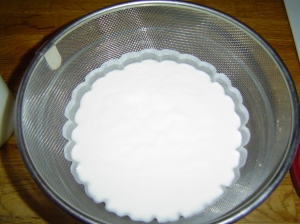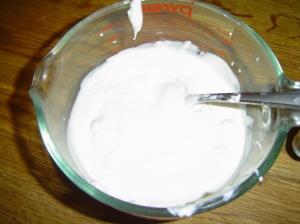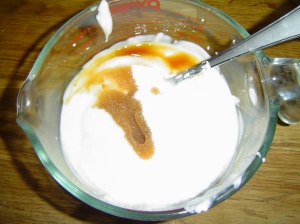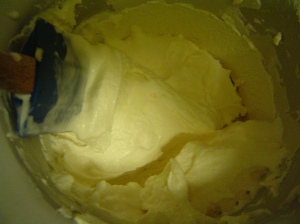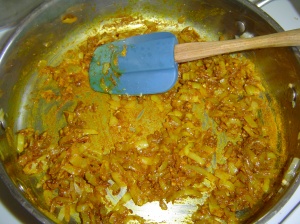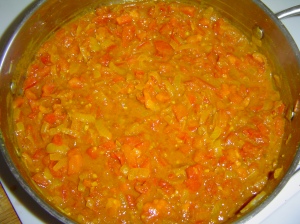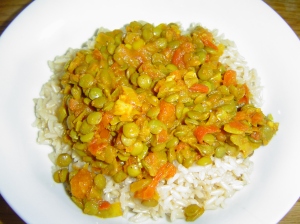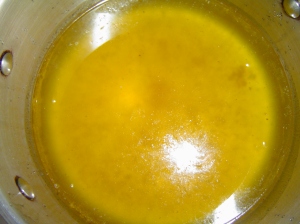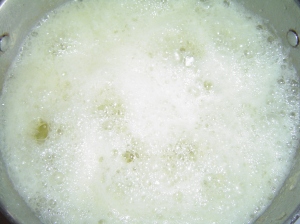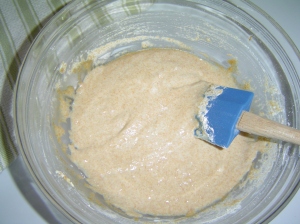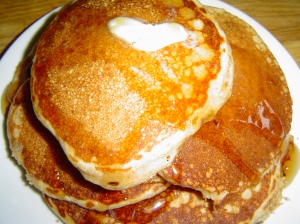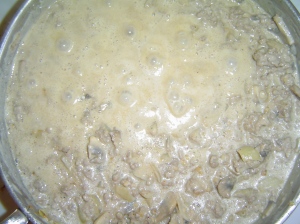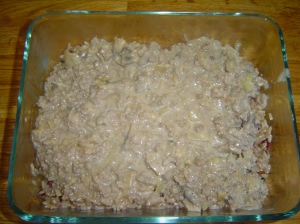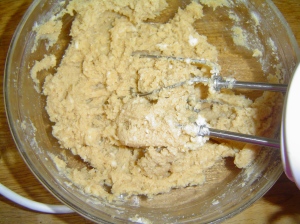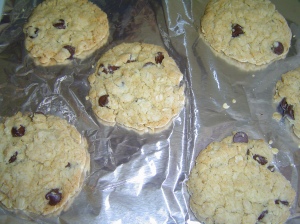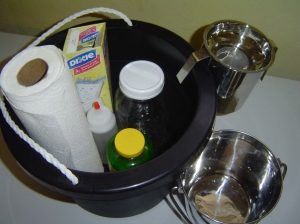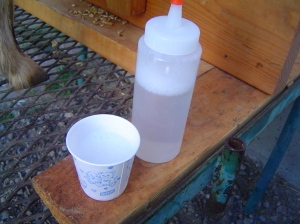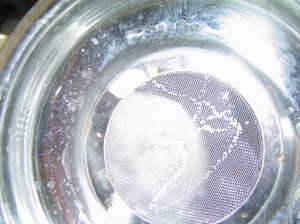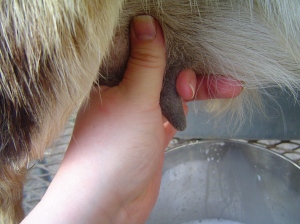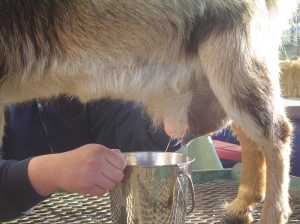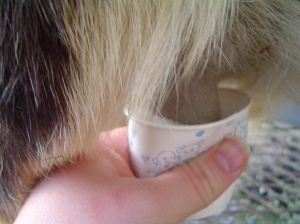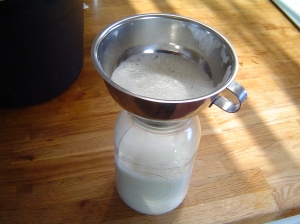With all the controversy over food dyes these days, I decided it was time to begin experimenting with natural food dyes. My first experiment was so successful that I had to end my 6+ month haitus from blogging so I could share.
I participate in the Bountiful Baskets produce co-op. This past week they offered an additional item for purchase, an egg dye kit. The kit included: blueberries, chili peppers, beets, carrots, red onions, yellow onions, and strawberries. The day prior to picking up my basket I recieved a short e-mail with a few hints, along with some links, as to how to turn these colorful fruits and vegetables into beautiful easter eggs. I did a little additional research, then rolled up my sleeves and got to work.
The basic idea was to dice, chop, grate, or crush the fruit/veggie then boil in 2-3 cups of water.
I boiled each one for about 20 minutes, then mashed the fruit with a potato masher to get as much color out as possible. Then boiled a few more minutes adding more water if necessary. When I was satisfied with the color I strained the juice into a mason jar and added one tablespoon distilled white vinegar for each cup of liquid. (One suggestion I read said the eggs could be boiled directly in the juice, I tried this and thought that it added more work than it saved.) I then covered the jars and placed them in the fridge to cool.
I then placed the boiled eggs into the jars for varying lengths of time. Below are the formulas that worked best for me.
Red/Purple/Pink – Finely dice one large beet. Boil in 2-3 cups water for 20 minutes. Mash with a potato masher (the beets wont be soft enough to mash, but go ahead and give them a good stir anyway. Boil for several more minutes adding more water if necessary. Strain into jar. Add 2-3 Tbls. vinegar. The length of time in the dye will make a large difference in the resulting color with this dye. You can also dilute the dye with water for a softer pink color. Add additional vinegar if you add a significant amount of water. I never did get a good red egg. The best luck I had was to soak an egg in the beet dye for several hours, than in the orange (onion) dye for several hours. I tried strawberries for a pink dye and was dissapointed with the results, I would rather eat the strawberries. I tried dried red chili peppers, but got an orange color. Red onion skins resulted in a color similar to the beet dye. If you want to try it you can follow the directions below, substituting a red onion.
Orange – Peel the skin from one large yellow onion, slice into strips and boil in 2-3 cups water. Let boil for 20 -30 minutes. Strain into jar. Add 2-3 Tbls. vinegar. It only takes about 20 minutes to get an orange egg, after that it will begin to turn a dark tan color, so check you eggs periodically.
Blue – Boil 1/2 cup of blueberries in 2-3 cups water for 20 minutes. Mash blueberries with a potato masher. Boil for several more minutes adding more water if necessary. Strain into jar. Add 2-3 Tbls. vinegar. It takes at least an hour to get a nice blue. The egg will apear a dingy purple color when removed from the water, but will dry to a nice blue. If it isn’t dark enough when dry, go ahead and put it back in.
Yellow – Grate one large carrot, bring to a boil in 2-3 cups water. Add 1 tsp. tumeric or cumin, if wanted, to enhance color. Boil for twenty minutes. Strain into jar. Add 2-3 Tbls. vinegar. To get a nice yellow egg it will need to soak for several hours, maybe even overnight.
Green – Soak egg in yellow dye for 2 hours, remove from dye and allow to dry completely. Place in blue dye for about one hour. Putting the egg into the blue first will result in a slightly different color. Experiment with different lengths of time in each color for varying shades of green. Allow the egg to dry completely.
If you are going to soak an egg in multiple colors allow the egg to dry completely between soakings for best results. Have fun!
I posted this blog over at Kelly the Kitchen Kop’s Real Food Wednesdays and the Nourishing gourmet’s Pennywise Platter Thursday. Head on over to these great blogs for more real food ideas!


